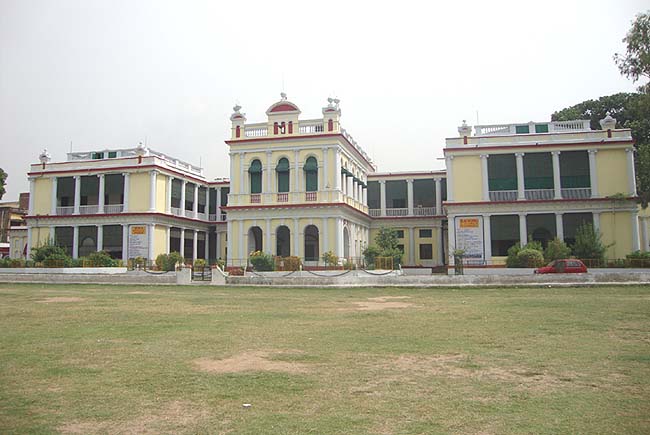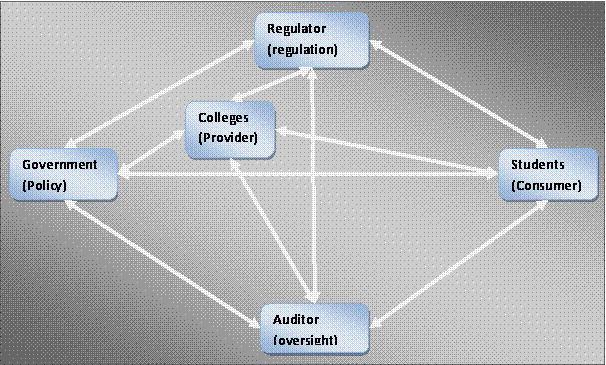|
|
(BiharTimes) It is seven years since Bihar turned an important chapter in its political history. People expected to see a lot of change in many segments. Higher education has been definitely one such segment. Instead, this important sector continues to be in ICU even now. Call it a lack of focus, to say the least, or abject political apathy at the worst. A more sordid drama, on the other hand, continues to be played out between The Chancellor and The State Government. |

Higher education sector is ripe for a complete makeover. Capital outflow for higher education continues to be quite high underscoring its demand and also willingness of people to pay for it. Yet, this sector has not seen any significant development. Apart from the political apathy, as explained earlier, this sector is beset by few specific nagging problems as well, viz:
- Substandard teaching standards: Teaching has become the last refuge of unemployable, dejected and deeply demotivated youths. Problem lies in the very architecture of higher education. Biggest culprit across the country is perhaps the salary structure. In case of Bihar, there is additional problem of delayed salary payments. This has been further compounded by the large scale contractual appointments in the state. Now the situation is so acute that state cannot get quality candidates for teaching. Substandard teaching may destroy generations, and indeed it has done so. Additionally, one would have expected that teaching in higher education is spared the scourge of reservation. It is unlikely to do any good for even those classes whom it is touted to help in the first place.
- Lack of infrastructure & resources: this is especially confounding as the state continues to see huge capital outflows for higher education. Only if, the same could be channelled inwards in state, there would not have been any dearth of resources for funding higher education. Blame it on failure to provide an enabling policy framework that higher education is beset with such resources crunch in spite of its being available in plenty.
- Out of tune curriculum- It seems higher education is designed more to provide jobs to unemployed individuals than to prepare manpower for contemporary requirements. Inertia is embedded in the current architecture of higher education. Retraining and redeployment of faculty is virtually absent. Consequently institutions continue to carry courses which are relics from the past.
To borrow from the phrase of Hon’ble Chief Minister of Bihar, higher education is marked by absence of governance rather than bad governance. What can explain the failure to recruit regular faculties, years after this government has come to power.
It is time that urgent steps are initiated to retrieve this situation. A three pronged approach called three pillars of higher education reform needs to be earnestly taken up. These three pillars are:
- Entitlement based Delivery Framework for Inclusion
- Sustainable Funding Model
- Fostering Governance Architecture for Excellence
Pillar I: Entitlement based Delivery Framework for Inclusion
Such an approach has been widely suggested in state governments own approach paper on 12th five year plan. It is time that same is implemented now. Entitlement based delivery framework for higher education would subsume population size, distance to be travelled and the administrative units. Ideally, the following criteria can be employed in the given context.
- Higher secondary: for population of 15-20 thousand, for administrative unit of Panchayat , seats @ 10000 per lacs ( i.e. 1500 to 2000 per institute) ( not part of higher education though)
- Degree College: for a population of 1-2 lacs, for administrative unit of Block HQ, seats @ 1000 per lacs. ( i.e. 1000 to 2000 per college)
- PG College: for a population of 5 lacs to 100lacs, for administrative unit sub division HQ, seats@ 100 per lacs ( i.e. 500 to 1000 per college pg seats)
- PHD Level Institutes: for a population of 20 lacs to 30 lacs each, for administrative unit districts HQ, seats @10 per lacs (200 to 300 per institutes)
A five year mission mode initiative should be launched to rationalize existing feeder areas and supplementing unaddressed feeder areas as in the criteria defined above.
Pillar II: Sustainable Funding Model
Given the exhibited propensity of spending huge sums of money on higher education, it should not be difficult to mobilize adequate resources with right strategy and approach. Since state is anyway short of resources to support primary and secondary educations, It would be better to leave the higher education to market forces with states role limited to making strategic intervention in form of free-ships and viability gap financing. Inherent viability of higher education can be very well tapped into by:
- Monetizing existing assets to free locked resources
- Securitization of future revenues to generate resources upfront
If government were to tap into the first option of monetizing the existing assets, it will have to free operation of existing institutions from under its control to professionally managed academic councils. Academic council can take a decision on planning curriculum as per market demand and charging the market rate for the same. This will allow them to offer better compensation to the faculty. Consequently better talents can be attracted in higher education. Government on its part can support needy students by either providing scholarships or guaranteeing the educational loan. Just to avoid moral hazard of wilful default, government should pay up the guaranteed educational loan only after it is formally reported to CIBIL.
Government can levy a claim, based on the fair assessment, of the revenue of existing institution so freed up for market operation. Such revenue, apart from the saved government funds, can be then used for VGF for setting up of new institutions.
Also future revenue securitization can be resorted to in case of institutions being set up afresh. This would require that government commits an assured revenue stream for new institutes either by providing scholarship against certain number of seats or by guaranteeing educational loan for certain specified number of other seats. Moreover, government can also commit assured resources against the research work and consulting services contracted from the institution in question. These government commitments can then be securitized to raise funds from the financial market. Revenue against free seats, annual government grants and other income can be planned for meeting revenue expenses.
Further, state can provide a viability gap funding and land free of cost for making new institutes viable. Such institute can be either in government sector managed by professionally structured academic councils or alternatively can also be in PPP mode.
Diagram below suggest such a sustainable viable financing model.

Pillar III: Fostering Governance Architecture for Excellence
A self disciplining model full of enough check and balances can help get rid of many an ills plaguing the higher education sector in Bihar. Such governance architecture termed Diamond Architecture of Governance will have three lines of defences which would help keep governance on the right path. First and foremost actor in this diamond architecture will be the consumer of services, that is, students themselves. They will determine the revenue flow to institutions which may be either their own money or scholarships etc as may be committed by the government. They will have an option to report to regulator if they are not satisfied by the services offered by the institutes. Regulators then can adjudicate on the sum required to be paid by the student.
Next crucial role will be played by the regulator. Regulator would be responsible for quality rating of the institution, certifications, and laying down guidelines for the fair operation by educational institutes. They may also act as the regulator of fee for which they should lay down a quality linked fee structure.
Auditors can be from outside the government. It can be ideally under C&AG. This will ensure that affairs of colleges are being run in a fair manner. As such C&AG will directly report its finding to state assembly.
Role of the state government would be limited to formulating policies, organizing and setting up of new institutions.
Academic councils shall have the onus of running the institutions. It should have representatives from financing institutions, student body, government, relevant elected political representative, teaching staff and non teaching staff but not from regulators or auditors side. Affairs of such institutes should be run by this duly constituted academic council without any direct government interventions.
Diamond model of governance architecture: This comprises of five main actors, viz:
- Provider: Provider of education should be colleges with an independent trust/board/senate for managing its affairs.
- Consumer: Consumer of offering of colleges will primarily be Students. Additionally, it can provide research, and consulting services to industry, other organizations and government.
- Regulator: Regulator shall be responsible for laying down quality certifications, conducting exams among other regulation
- Government: shall be responsible for laying down policy frameworks
- Auditors: auditors shall be responsible for independent verification of functioning of colleges.

Higher education is among the most viable and attractive economic propositions in Bihar. It is languishing only because of lack of political will. Bihar can break new grounds in higher education provided state government is willing enough.
|
